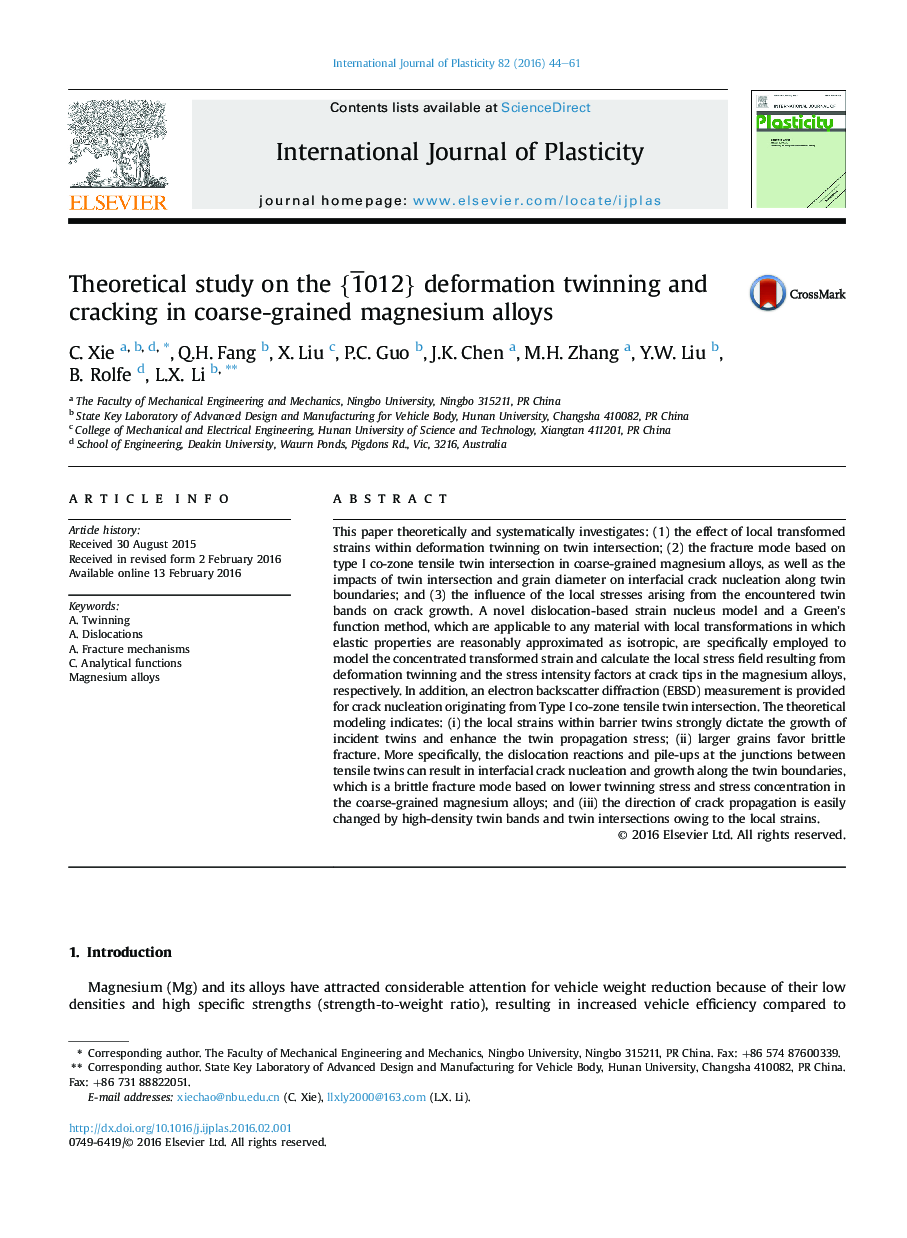| کد مقاله | کد نشریه | سال انتشار | مقاله انگلیسی | نسخه تمام متن |
|---|---|---|---|---|
| 784323 | 1465591 | 2016 | 18 صفحه PDF | دانلود رایگان |

• The effects of local transformed strains within deformation twinning on twin intersection and cracking are considered.
• To model the local stresses arising from the deformation twinning, a novel strain nucleus model are employed.
• The fracture mode based on type I co-zone tensile twin intersection in coarse-grained Mg alloys is theoretically modeled.
This paper theoretically and systematically investigates: (1) the effect of local transformed strains within deformation twinning on twin intersection; (2) the fracture mode based on type I co-zone tensile twin intersection in coarse-grained magnesium alloys, as well as the impacts of twin intersection and grain diameter on interfacial crack nucleation along twin boundaries; and (3) the influence of the local stresses arising from the encountered twin bands on crack growth. A novel dislocation-based strain nucleus model and a Green's function method, which are applicable to any material with local transformations in which elastic properties are reasonably approximated as isotropic, are specifically employed to model the concentrated transformed strain and calculate the local stress field resulting from deformation twinning and the stress intensity factors at crack tips in the magnesium alloys, respectively. In addition, an electron backscatter diffraction (EBSD) measurement is provided for crack nucleation originating from Type I co-zone tensile twin intersection. The theoretical modeling indicates: (i) the local strains within barrier twins strongly dictate the growth of incident twins and enhance the twin propagation stress; (ii) larger grains favor brittle fracture. More specifically, the dislocation reactions and pile-ups at the junctions between tensile twins can result in interfacial crack nucleation and growth along the twin boundaries, which is a brittle fracture mode based on lower twinning stress and stress concentration in the coarse-grained magnesium alloys; and (iii) the direction of crack propagation is easily changed by high-density twin bands and twin intersections owing to the local strains.
Journal: International Journal of Plasticity - Volume 82, July 2016, Pages 44–61